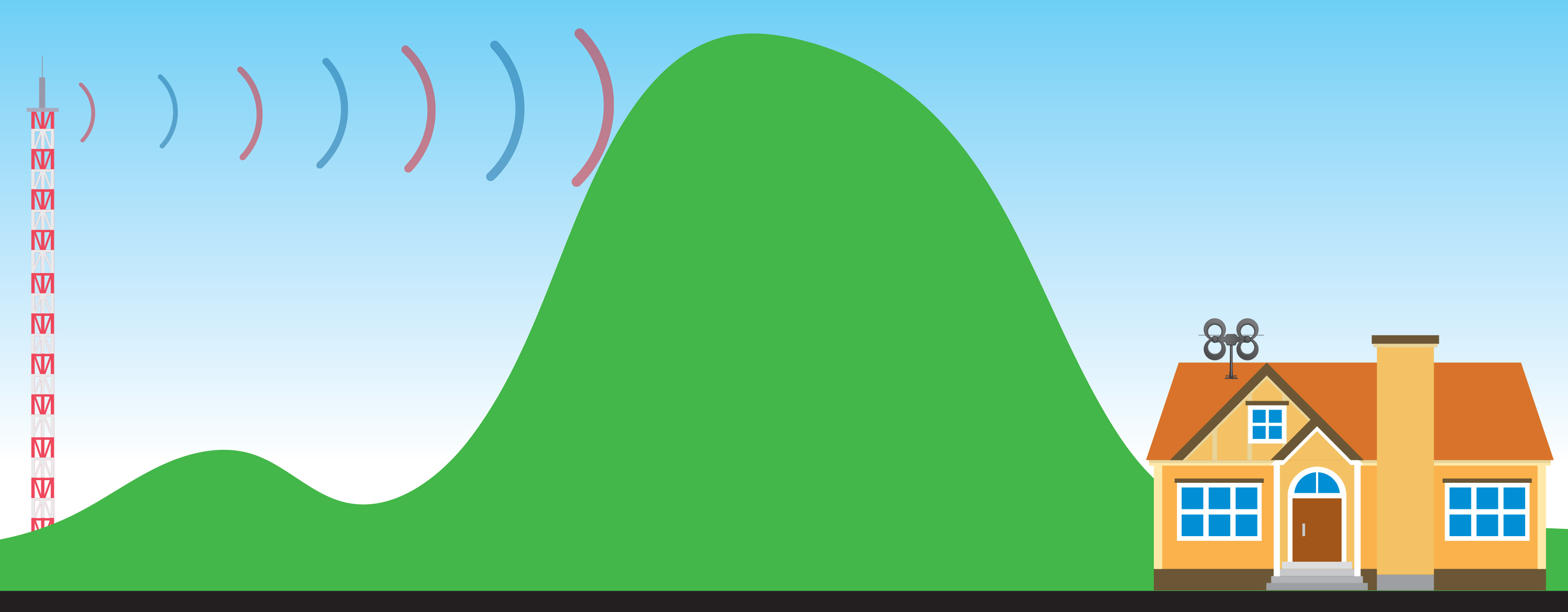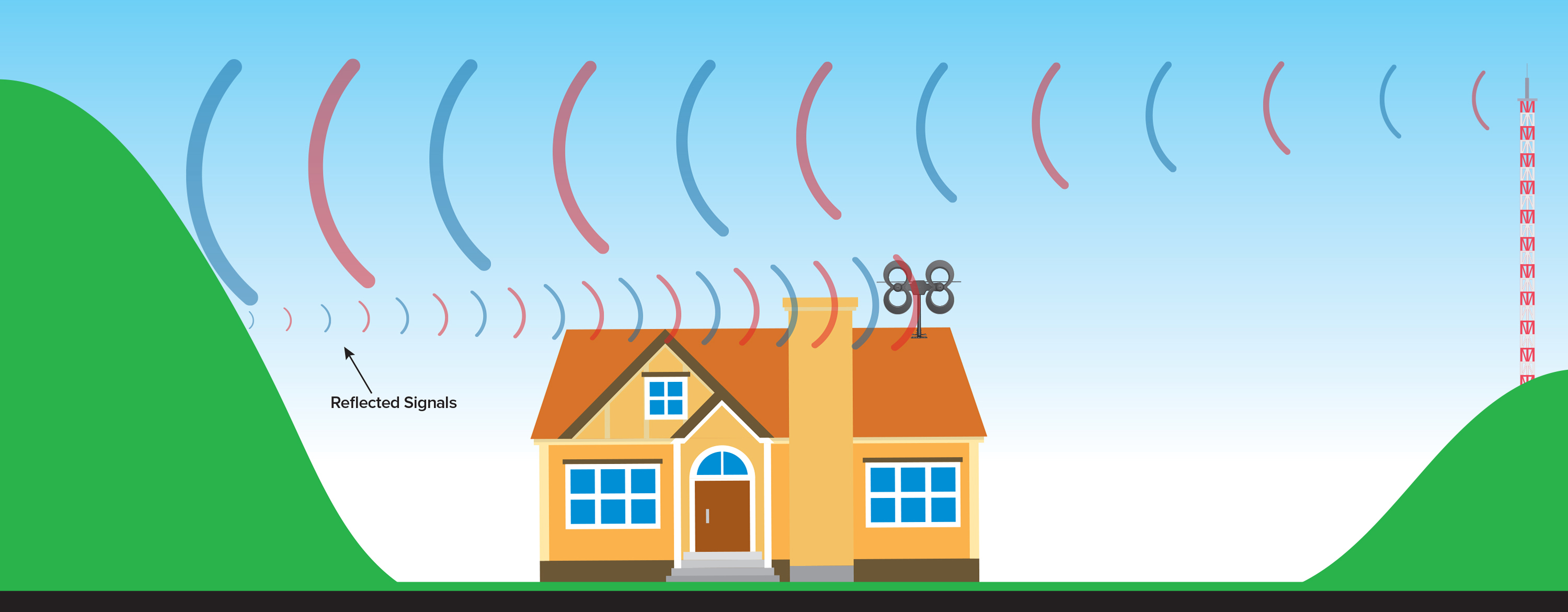Outdoor Antenna Installation Tips
Looking for more guidance or want to educate yourself before cutting the cord? Here are some tips tailored to safely installing your outdoor TV antenna.
Please note: Every time you move or reconnect your antenna, you must scan for channels on your television. Consult your television owner's manual for more precise guidelines. We include Quick Start guides with all our TV antennas and also provide them here on our website for free.
Installation tips:
- Before installing an antenna permanently on a roof or in your attic, test reception in that area and other locations prior to installation. To perform a test, connect the coaxial cable from the antenna to your TV. Then, place your antenna in the desired location. Turn on your TV using your TV and, using your remote, complete a channel scan. Once complete, flip through your TV channels and watch for signal interruptions. Make sure your antenna is installed where you get the best signal and the highest number of available channels.
- Higher is always better. Mount the antenna on your roof or in the attic for optimal performance. These locations are more likely to experience fewer obstacles which cause signal interference between the antenna and broadcast towers.

- Face the front of the antenna toward the broadcast towers. Even multi-directional antennas require this to achieve the best possible reception. Don't know where your towers are? Visit our transmitter locator or download our free Antenna Point app.
- Check your outdoor antenna regularly for secure coaxial cable connections and signs of corrosion. Sometimes debris or humidity can interfere with reception. Where possible, cover all connections and use waterproof sealant when installing an antenna mast. (See our included sealing pads for reference.)
- Installing your antenna near power lines is dangerous. The antenna must be at least 20 ft. (6 meters) away from all power lines. If any part of the antenna or mast assembly comes into contact with a power line, call your local power company. Do not remove it yourself.
Note: Unfortunately, sometimes antennas are returned to us in perfect working order but were returned due to faulty installation techniques. Continue reading for troubleshooting tips.
Troubleshooting tips:
Spotty reception with accessories:
- For the best reception, make sure the coaxial cable is the correct length for your installation needs. Similar to getting your antenna up high, terminating your coaxial cable at the right length will provide better reception to your television.
- If you are using a splitter, diplexer, or your cable run must be longer than 100 ft., consider using a preamplifier to boost weak signals.
Spotty reception:
- Reflected signals are also called "multipath interference". For those living close to broadcast towers, signal loss can occur when strong signals bounce off nearby buildings and other surfaces in the area. Aim your antenna in different directions, even sometimes away from the towers, and scan for channels. If this doesn't improve your reception, your installation may require an attenuator.

- Do not install your antenna near metallic objects or reflective surfaces, as this could also cause signal interference.
- Since the switch in 2007 from analog to digital signals, receiving TV signal is "all or nothing". You won't see "fuzz" or "snow" on your TV screen if the signal is weak or there is no signal. When a digital signal is received, it will display crystal-clear on your TV. If the signal is interrupted, your TV screen will be blank.
Combining multiple antennas
When combining multiple antennas on the same mast, keep at least 4 to 6 feet of vertical separation between the two antennas to prevent interference. If you want to combine signals from a UHF antenna with a VHF antenna so there is only one down-lead going into your house, use our UHF/VHF signal combiner with a channel filter for each antenna, designed not to pick up out-of-phase signals through the other antenna. For the best results, use equal lengths of coaxial cable from the output of each antenna when connecting to the UHF/VHF combiner.
Optional grounding information
For outdoor TV antenna installations, grounding the coaxial cable will protect your equipment from voltage surges created by nearby lightning strikes but will not protect from a direct strike. Check your local electrical codes to make sure your installation is in compliance. We recommend calling a professional electrician to advise or install your antenna. We have an educational page with suggestions for grounding your antenna.
Safety precautions:
If you are installing an antenna on the roof, assemble the antenna on the ground. Installing an antenna on windy days can be especially dangerous and even slight winds create strong resistance when attempting to set up an antenna or mast.
Antennas that are improperly installed or mounted on inadequate structures are very susceptible to wind and weather damage. This damage could become life-threatening. The owner and installer assume full responsibility for the installation and verification that it is structurally sound to support all loads (weight, wind, ice, etc.) and is properly sealed against the elements and leaks.
Antennas Direct®, Inc. is not responsible or liable for any damage or injury resulting from antenna installations or by an antenna system failure due to any unknown variable applications.


No comments:
Post a Comment